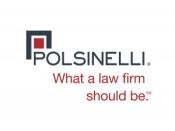The Organization for Economic Cooperation and Development (OECD) published a July 4, 2018, report entitled Investigating the Different Types of Risk Assessments of Manufactured Nanomaterials: Identifying Tools Available for Risk Management Measures and Uncertainties Driving Nano-Specific Data Needs. The report presents the findings from a survey conducted in 2016 that aimed at investigating the different types of risk assessment. The survey was conducted to gather the following information concerning risk assessments in different member countries:
- Different types of risk assessment used by jurisdictions, such as:
- Screening (e., risk and hazard prioritization) level versus a more detailed risk assessment;
- Level of detail in the assessment; and
- Jurisdictions that emphasize hazard more than risk/exposure;
- Levels of uncertainties/assumptions used in these risk assessments;
- Risk management measures and other outcomes of the assessment; and
- Risk assessment process(es) used when evaluating manufactured nanomaterials, including uncertainties, data requirements, and characterization/identification.
OECD states that the outcome of the project is an increased understanding of the details and scope of different regulatory risk assessments for manufactured nanomaterials by comparing and contrasting the conditions, assumptions, and levels of uncertainties of approaches used in different jurisdictions. Best practices could be identified that could be adopted by other countries. A majority of survey participants identified the following recommendations:
- There is further need for validated exposure/release scenarios and assessment for nanomaterials;
- The utility of specific physical-chemical properties to predict environmental fate and hazard must be validated to agree to a set of required characterization parameters, which will likely be specific to the type of nanomaterial being assessed;
- It is essential to improve the ability to use read-across/grouping/screening tests to assess nanomaterials; and
- There needs to be continued development of validated test guidelines specific to nanomaterials.




 i
i


